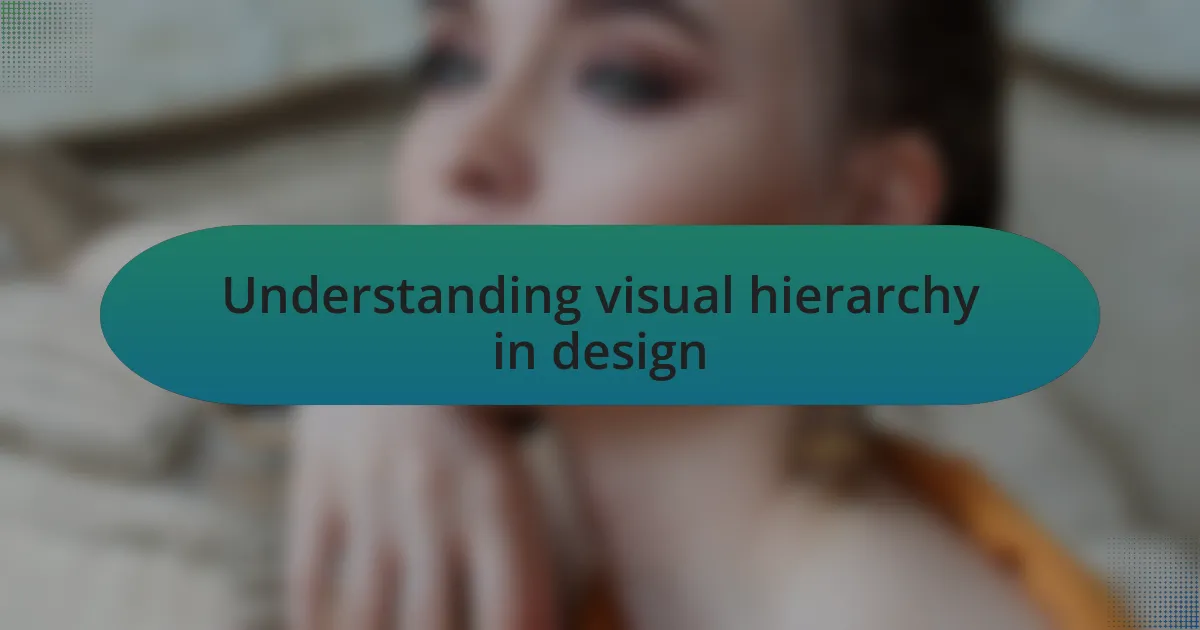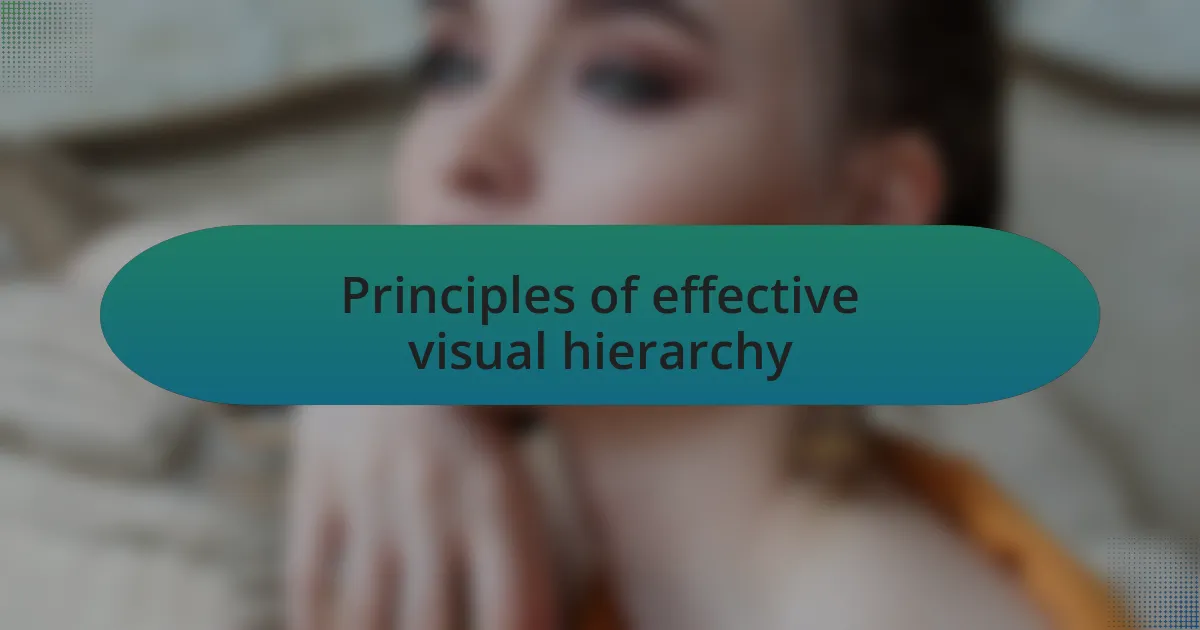Key takeaways:
- Visual hierarchy is essential for directing viewers’ focus on important elements in design through size, color, and positioning.
- Key principles include contrast, alignment, and the use of white space to create order and enhance readability.
- Color, typography, and imagery significantly influence how content is perceived and navigated by users.
- Effective use of visual hierarchy fosters emotional connections and improves user engagement on websites.

Understanding visual hierarchy in design
Visual hierarchy is a fundamental design principle that guides how we perceive information on a webpage. I often find that when I’m browsing through fashion sites, the most captivating layouts always draw my eye to the most important elements first. It sparks the question: how does one determine what should take center stage?
When I build a design, I prioritize elements based on their significance and purpose. For instance, using larger fonts or bolder colors for headlines captures attention instantly, while smaller text can convey supporting details. It’s like telling a story—what do you want your audience to notice first?
I remember the first time I experimented with visual hierarchy in my own blog; I shifted the main image to the top of the page, and suddenly everything felt more cohesive. This simple adjustment made users linger longer and engage more deeply. Visual hierarchy isn’t just a technique; it’s an emotional connection that speaks to the viewers’ brains, guiding their journey through the design. Have you ever noticed how a well-structured design feels like a breath of fresh air?

Principles of effective visual hierarchy
One crucial principle of effective visual hierarchy is contrast. I recall working on a project where I used soft pastels against a bold backdrop. The impact was striking—it was as if each element had its own spotlight. This kind of contrast not only highlights what matters but also guides the viewer’s eye effortlessly, ensuring critical details don’t blend into the background.
Another key aspect is alignment. When I started focusing on alignment, it was like a domino effect in my designs. I noticed that when elements are properly aligned, they create a sense of order and structure, making the page feel more approachable. Have you ever wondered why some designs feel chaotic while others are pleasing? Strong alignment can be the difference, anchoring elements together in a way that feels visually satisfying.
Lastly, white space—or negative space, as some call it—plays a vital role in visual hierarchy. I still remember the first time I embraced white space in my website’s design. It was liberating! Instead of clutter, I found clarity, allowing viewers to breathe and focus on the essential content. It makes me wonder: do we sometimes underestimate the power of space in our designs? Adequate white space not only enhances readability but also emphasizes key elements, leading to a more enjoyable user experience.

Elements that influence visual hierarchy
Color is another vital element that affects visual hierarchy. I once experimented with a vibrant color palette for a fashion design blog, and the reaction was immediate. The strategic use of color not only drew attention to certain features but also evoked emotions, such as excitement or calm. Have you thought about how color can change the way a viewer perceives a piece? It’s fascinating how colors can set the mood and influence decisions, guiding visitors toward what you want them to see first.
Typography is equally influential in shaping visual hierarchy. A memorable experience I had was when I switched to a more modern font for my blog’s headings. It transformed the way text was perceived—suddenly, it wasn’t just words on a page; it conveyed style and sophistication. I frequently ponder: how often do we overlook the typeface we use? The size, weight, and style of letters all communicate importance, affecting how visitors navigate the content while reinforcing the overall theme of the site.
Lastly, imagery cannot be ignored. During one of my projects, I selected a powerful image as a hero banner, and it completely shifted the focus of the page. It’s incredible how a single visual can create an immediate connection and draw viewers in. Isn’t it interesting how the right image can speak volumes? The relationship between images and text creates a dynamic interplay that significantly alters the viewer’s experience, effectively guiding them through the narrative you wish to tell.